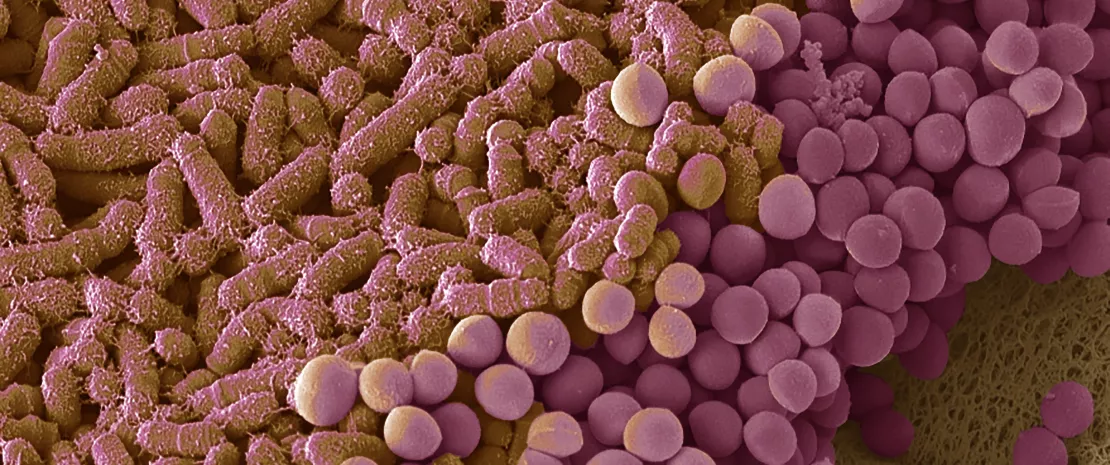Fecal microbiota: a biomarker for colorectal cancer and its progression
By analyzing 3,741 fecal metagenomes from 18 cohorts, researchers seek to optimize non-invasive colorectal cancer screening by identifying improved combinations of microbial biomarkers.
Sources
This article is based on scientific information

About this article
Colorectal cancer (CRC) is the third most common type of tumor and also the second deadliest cancer. The gut microbiome appears to play a crucial role in carcinogenesis. However, research is still too limited to use microbiota as a clinical screening tool, even though early detection would increase the chances for survival.
This is why studies published in 2025 in Nature Medicine are so important. They are based on the analysis of 18 datasets: 12 from pre-existing databases including 2,116 individuals (930 patients with CRC, 210 with adenomas and 976 healthy controls) and 6 from new cohorts (1,625 individuals) providing information on both the cancer’s stage and the tumor’s location in the body. In total, the study included 3,741 individuals, providing strong statistical power and potentially accurate results
3 CRC is the 3rd most frequent tumor type worldwide.
2 CRC is the 2nd most lethal tumor type worldwide.
Species involved, including oral bacteria
The authors detected 3,866 bacterial species, 15 eukaryotes and 23 archaea. The microbiota of healthy controls differ markedly from that of CRC patients, confirming results from previous studies: 125 species are more abundant in patients (106 known and 19 unknown) and 83 in controls (53 known and 30 unknown).
Five subspecies of F. nucleatum were among those more abundant in patients, namely, F. nucleatum subsp. animalis, vincentii (two different subspecies), nucleatum, polymorphum. Other bacteria previously associated with CRC, such as P. micra and B. fragilis, were also identified.
The gut microbiota may be involved in regulating ammonia in the CRC tumor micro-environment.
A significant portion of CRC-specific gut bacteria are typically oral species, with 21 of the 125 species more abundant in patients (16.8%) being oral in origin, including 11 commonly found in dental plaque.
30 % CRC has a 30% higher incidence in men.
60-65% 60–65% of all CRC cases occur in individuals with no previous family history.
Predicting colorectal cancer
Above all, this large dataset has improved the accuracy of colorectal cancer (CRC) prediction based on a simple stool sample: the area under the curve (AUC), a measure of model performance, now reaches 0.85 —an improvement over previous studies, which achieved a maximum of 0.81. A large part of this predictive power relies on bacteria that are typically oral in origin.
The authors also show that:
- microbial biomarkers are linked to the presence of a tumor,
- they vary according to disease stage: the abundance of P. micra and F. nucleatum increases as early as stage I CRC, while Akkermansia muciniphila and Parabacteroides distasonis rise in advanced stages, suggesting that microbiota changes occur continuously and intensify as cancer progresses (adenoma–carcinoma sequence).
- they also differ depending on tumor’s location: for example, three oral species were significantly more abundant in proximal colorectal cancer.
40% Only 40% of cases are diagnosed before metastases appear, with highest survival rates when the tumor is diagnosed at an early stage.
5 years 5-year survival rates for colon and rectal stage IV cancer are 11% and 15%, respectively.
Previous studies had implicated ammonia in the tumor micro-environment in T-cell depletion and cancer progression.
Although this association study cannot establish a causal link between microbiota and colorectal cancer, independent data suggest a contributory role. It confirms the value of fecal microbiota as a screening biomarker and identifies microbial signatures associated with tumor progression, which warrant further investigation in mechanistic studies.













